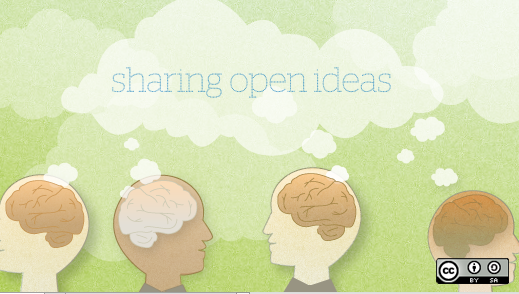In his book, The Open Organization, Red Hat President and CEO Jim Whitehurst recognizes Vineet Nayar, former CEO of HCL Technologies, an IT consulting company based in India. Whitehurst writes that Nayar started an internal blog called "My Problems," which featured the strategic problems Nayar was working on and solicited feedback and ideas from anyone in the company willing to share thoughts. Nayar (by the way) is acclaimed for leading a dramatic turnaround at HCL, as well as for his management style, which he details in his own book, Employees First, Customers Second: Turning Conventional Management Upside Down.
This willingness to involve the entire organization, and listen to feedback—good and bad—is something Whitehurst witnessed not too long after taking the helm at Red Hat, and is a central tenet of an open organization.
But at first glance, it can be shocking, Whitehurst said during "A Year of Conversations about the Open Organization," a June 1 webcast on which he appeared with guest Gary Hamel, management author and consultant. The webinar celebrated the first anniversary of The Open Organization.
During the webinar, Whitehurst shared a story about a briefing on Red Hat's technology direction that happened during his first weeks at the company. In attendance were the CTO, product marketing executives, key engineers, and others. One of the engineers disagreed with the technology direction, and a debate followed.
"At the time, I told my wife that I had one of the most bizarre experiences," Whitehurst recalled in the webinar, adding that (at most companies) a person who disagreed would have been fired before the end of the day.
"You don't go in front of the CEO and disagree with your entire chain of command and say why the decisions they are making are wrong," Whitehurst said.
Now, he sees the value in that type of open discourse.
"At Red Hat, we actually see that as a feature, not a bug," he said. "And one of the reasons I believe that Red Hat is successful is because we can have those types of dialogue."
Red Hat's heritage is in the open source software market, where large numbers of people collaborate on projects all the time, Whitehurst said.
"Red Hat has applied those same principals to our company," he said.
One of the most significant benefits of an open organization that doesn't concentrate the power for setting strategy and direction in the hands of a few is that it enables innovation, something many companies strive for but often struggle to achieve. The innovation challenge is even more striking when innovative startups enter a market and put the traditional way of doing things on its proverbial head (think Uber or Airbnb).
"More and more business leaders are realizing that disruptive change can hit them at any time," Whitehurst said. "Traditional planning and strategic development processes will not be able to identify proactively what those disruptions might be, nor will they make a company a disruptor."
Whitehurst said the realization that this is a problem with the structure of the organization and not a problem with the function itself is positive, and that more and more companies are worried about getting disrupted.
"It isn't about getting smarter people in my strategic planning department," he said. "Companies need to rethink the organizational structure so the whole organization is doing planning and out on the edges, where disruption happens, so it is noticed and acted upon."
Following up Whitehurst, Hamel shared recent statistics he's seen. As much as 77 percent of CEOs around the world say innovation is a key priority for them, he said.
"They understand that innovation is the only way to stay relevant and the only way to protect yourself from commoditization," Hamel said. Unfortunately, 94 percent of companies say they're dissatisfied with their current capacity to innovate, he added.
The problem is that current business environments and business models can't solve this inability to innovate.
"It is not about doing more of the same," Whitehurst said. "Peddling faster isn't going to solve the problem."
To find out what will help companies innovate, and the importance of an open organization in driving innovation, tune into the "A Year of Conversations about the Open Organization" webinar.






1 Comment